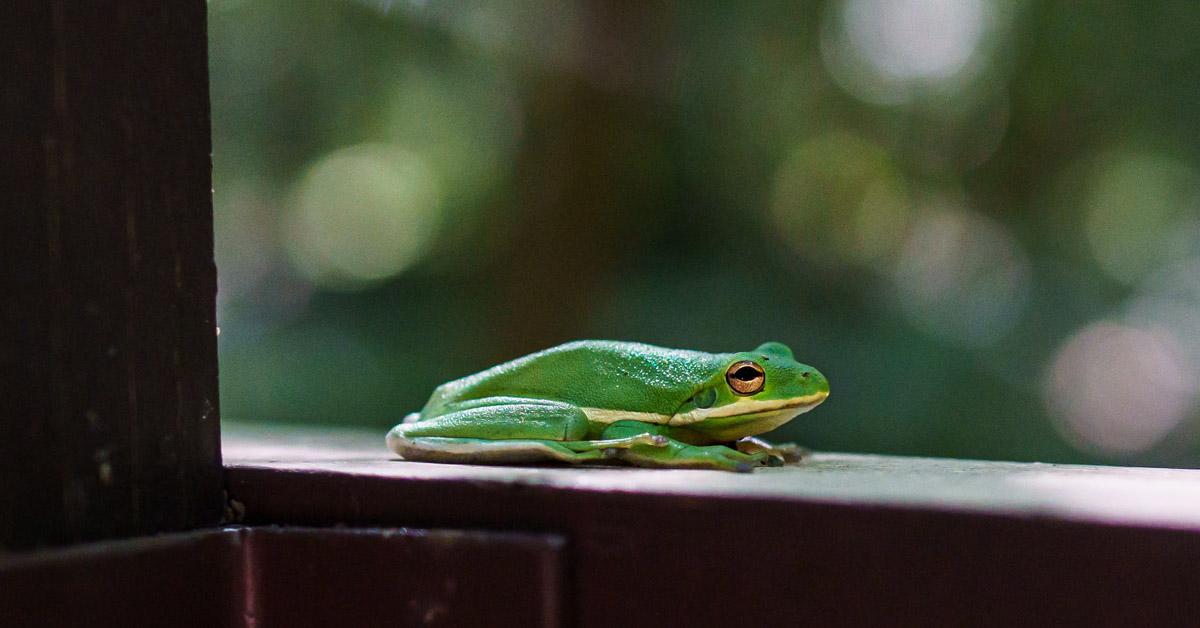
A green tree frog finds the light at Newport News Park.
By Blogger Meg Raynes
Photos by Meg Raynes
When imagining a visit to the coast of Virginia, do you think of sand-covered toes and salty air near the ocean? I do too, but the coast has so much more to offer than merely beaches. In the Coastal Region, the Lower Peninsula Loop of the Virginia Bird and Wildlife Trail (VBWT) juts out between the James River and Chesapeake Bay and provides parks and trails with both historical value and prime wildlife viewing.
Historic Jamestowne is often mentioned to me as an elementary field trip location for Virginians. Growing up in New Jersey, I had never visited during my early school years. So I was excited to visit the VBWT site of Historic Jamestowne, a unit of Colonial Historic Park. I arrived mid-morning and was pleasantly surprised that there were no crowds of people. The National Park Service has a quick and simple setup here for payment and access. After I got my pass, which is good for seven consecutive days, I entered behind the visitor’s center. A footbridge carries you over a marshy area before opening up to the tercentennial monument, New Towne, and more.
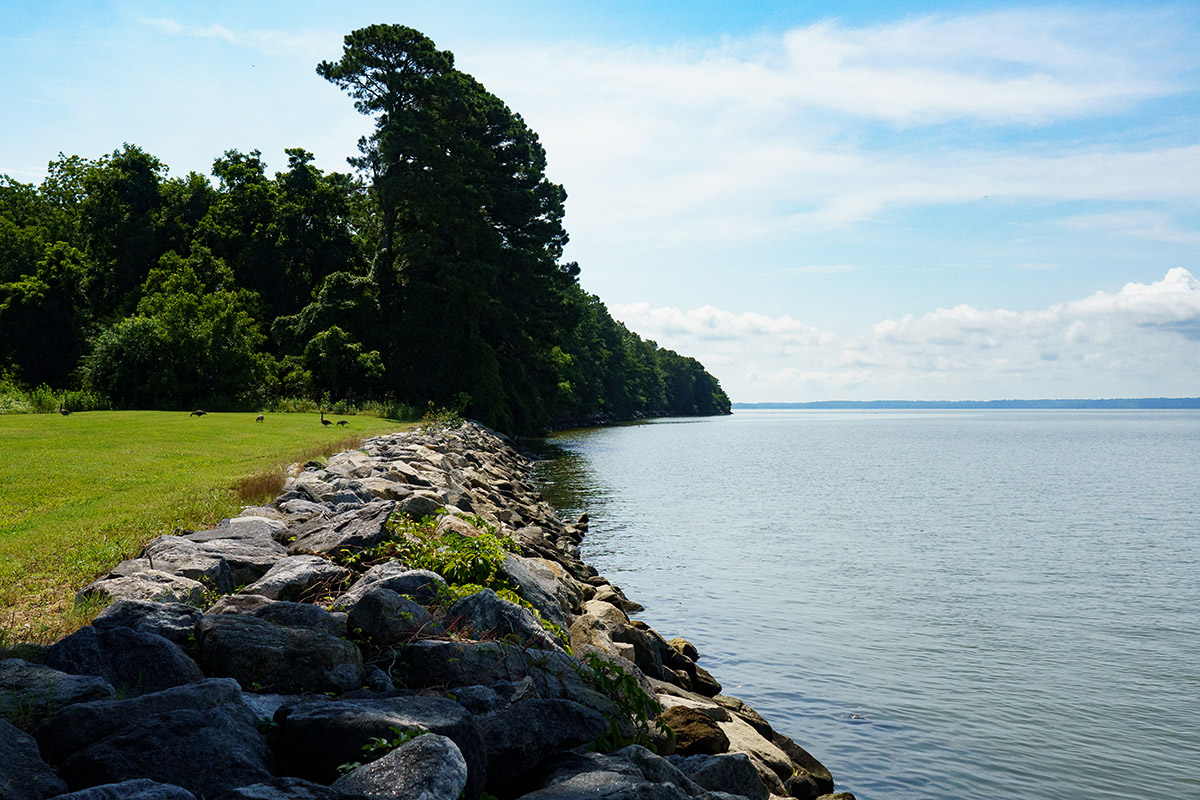
A view of the water from New Towne at Jamestowne.
New Towne is home to geese, blue jays, bluebirds, and more. I saw a gaggle of geese parading between old building foundations as I walked the grounds. I spent the morning exploring ruins, reading fun facts, and pondering what life would have been like in the 17th century. One historical marker shares, “Before tea and coffee became popular, beer was the everyday drink in England,” and excavated cellars tell us that settlers there housed plenty of beer and wine. I could agree to that. A cup of stout at breakfast to start the day? Yes, please!
I left New Towne and headed toward Island Loop Drive. The loop is accessible to drivers, hikers, and bicyclists, providing a full 5-mile tour or a shortened 3-mile stretch. Of course I had to take the full tour. Reaching the easternmost point, I parked at Black Point and traveled along the footpath to the James River. Just in the distance, a perched osprey sent off high-pitched squawks.
I had never before seen so many ospreys! Departing Jamestowne, I made one final stop on Colonial Parkway to watch more ospreys fly around, along with a rowdy crowd of red-winged blackbirds gathered in the underbrush. As the birds sang, my fellow travelers drove by, and there I was, standing still with my camera, thankful for these fleeting moments of peace in nature.

One of the red-winged blackbirds spotted on the Colonial Parkway.
My next stop was Greensprings Interpretive Trail. Unfortunately, I couldn’t complete the full trail system because Mother Nature decided to rain on my parade quite literally, but not before I could observe a few more bits of wildlife magic. I followed the trail’s main loop, across a wide boardwalk, and down a section labeled “Beaver Pond and Wetlands.” I passed two women who let me know that it would not matter if I yelled at the ducks they were watching because those ducks would not take notice. I chuckled and replied that I wouldn’t be yelling, but thanked them for the advice just the same.
As thunder rumbled in the distance and daylight began fading under the weight of storm clouds, I decided to turn back. Out of the corner of my eye, a flurry of wings flashed—beautiful, elegant egret wings. I crept down a side path worn by others (game trail or hiker trail, who knows). I had won the fowlest of jackpots: four or five great white egrets perched in the marsh. I stared in wonder at such pure and graceful beauty. By the time I had gotten close enough to see more of them, they noticed my presence. I snapped a few photographs, and one by one they began taking off into the distance.
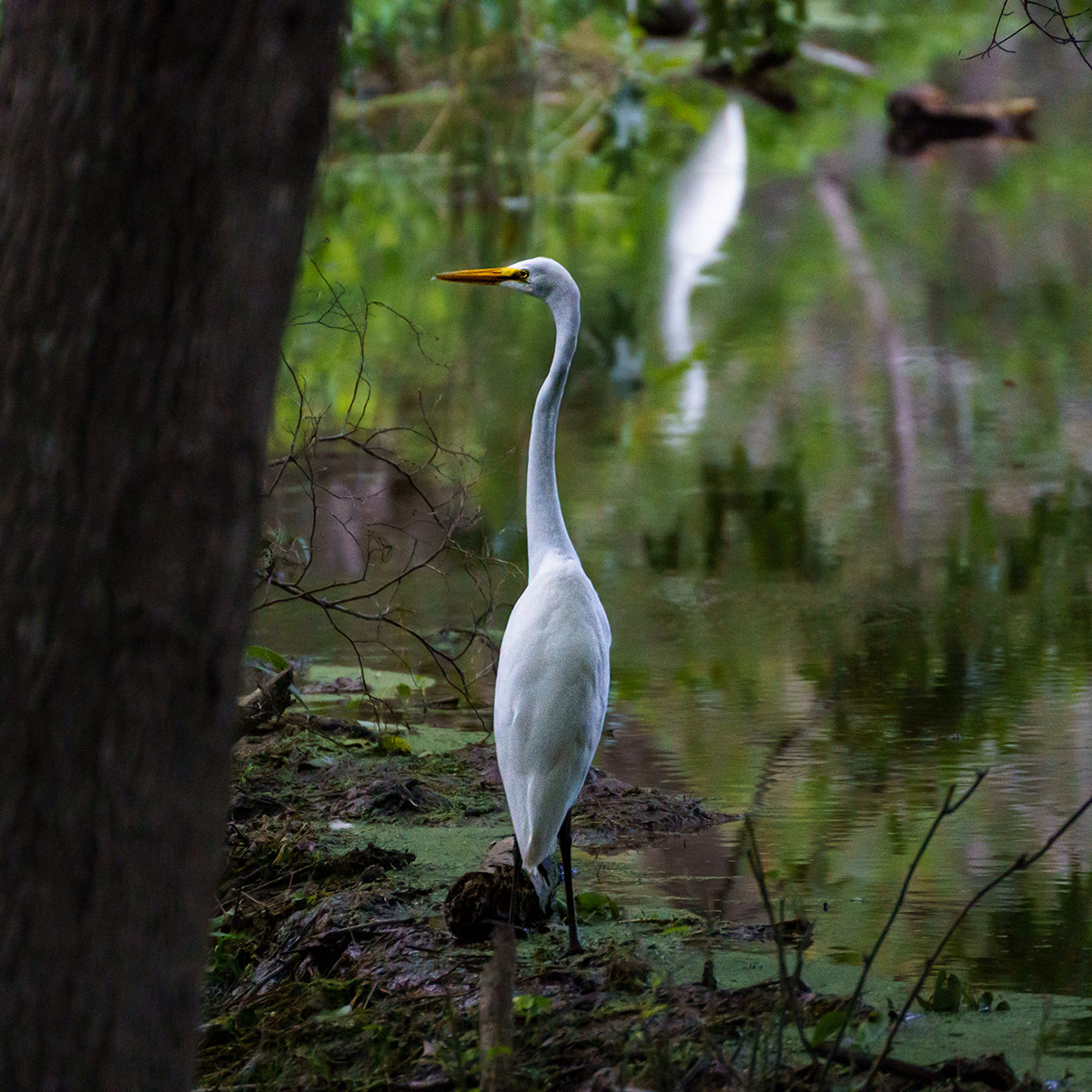
One of the stately great egrets along the Greensprings Interpretive Trail.
Retracing my steps back over the boards, I greeted another hiker passing by. She whispered, “hello,” back to me. I quickly realized she did not want to scare away a muskrat that was silently gliding through the waters below. She and I stood united in a moment of silence and appreciation of our nature.
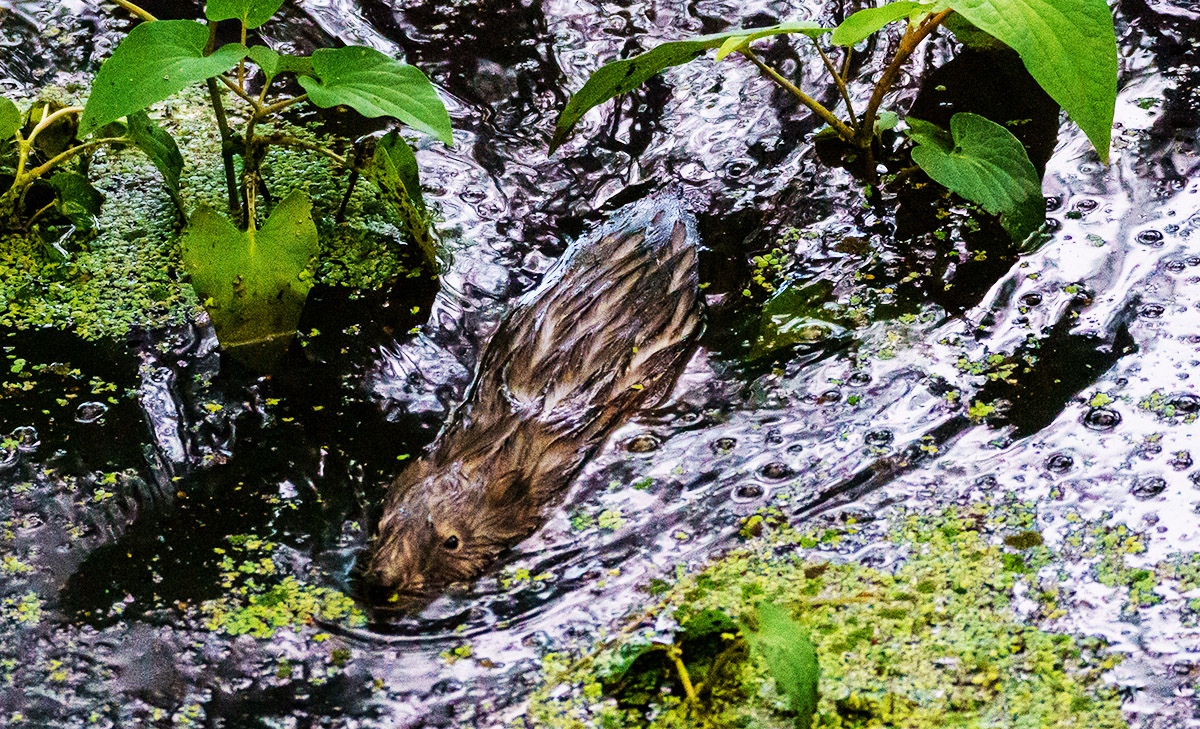
Spotted! A muskrat!
The final stop for this weekend trip was Newport News Park. The trail system here is bursting with wildlife! Passing over the Dam #1 bridge, I counted at least 20 turtles who were eager to get a look at passers-by.
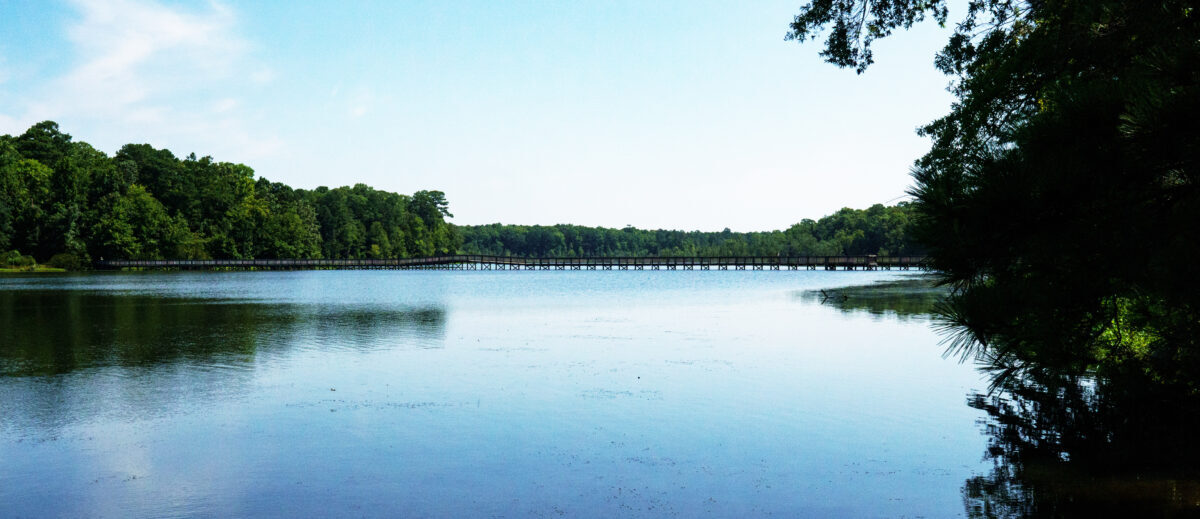
The view at Newport News Park.
I followed the White Oak trail down to the Wynn’s Mill and Swamp Fire trails where I hoped to safely see some of the cottonmouths that adorned posted warning signs. I did not find any snakes, but instead met a few box turtles, frogs, and a family of deer who quickly took off through the woods before I could snap a photo. I was surprised by how unbothered the box turtles were and by how willingly the frogs posed for photos.
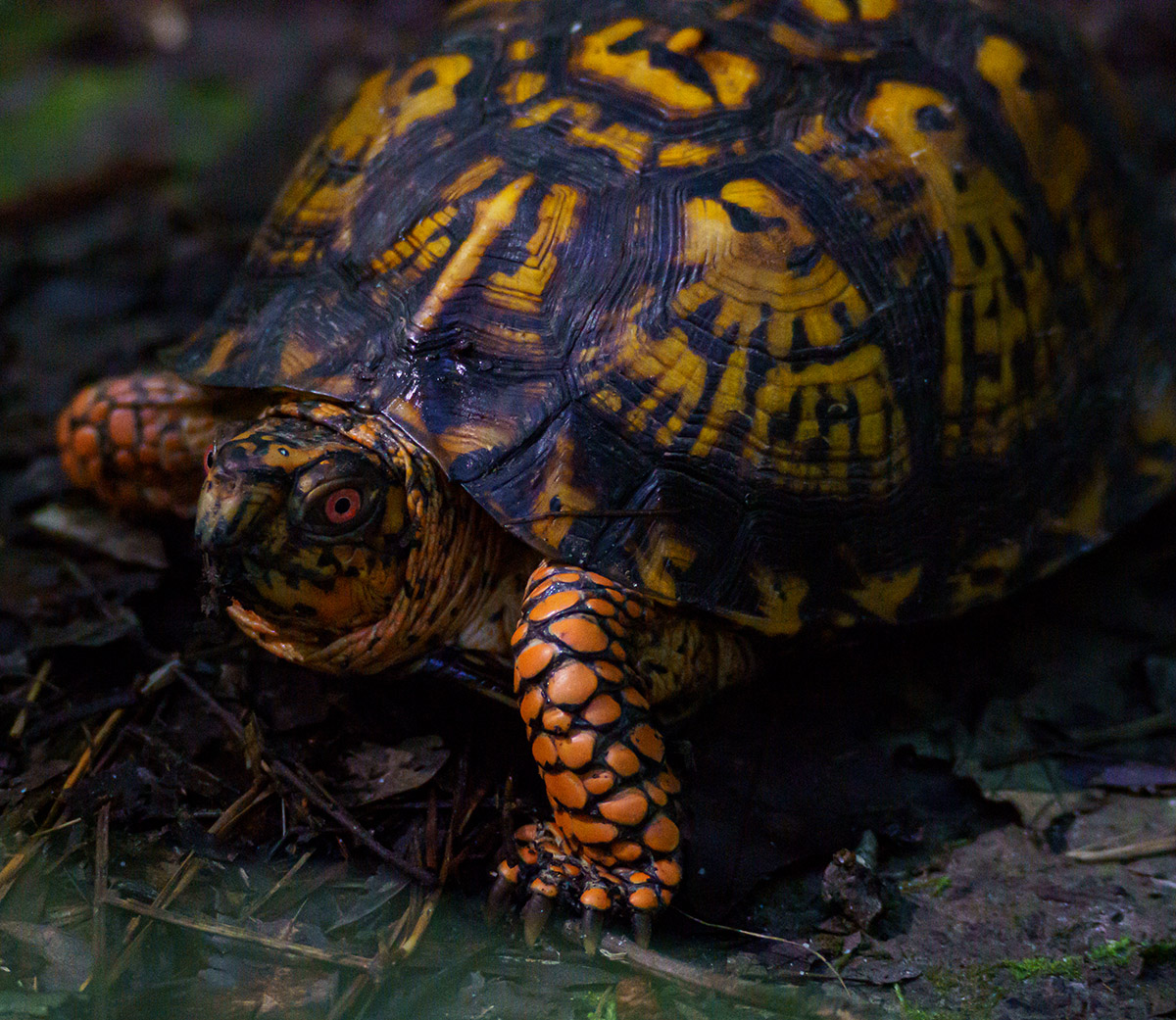
One of the many box turtles at Newport News Park.
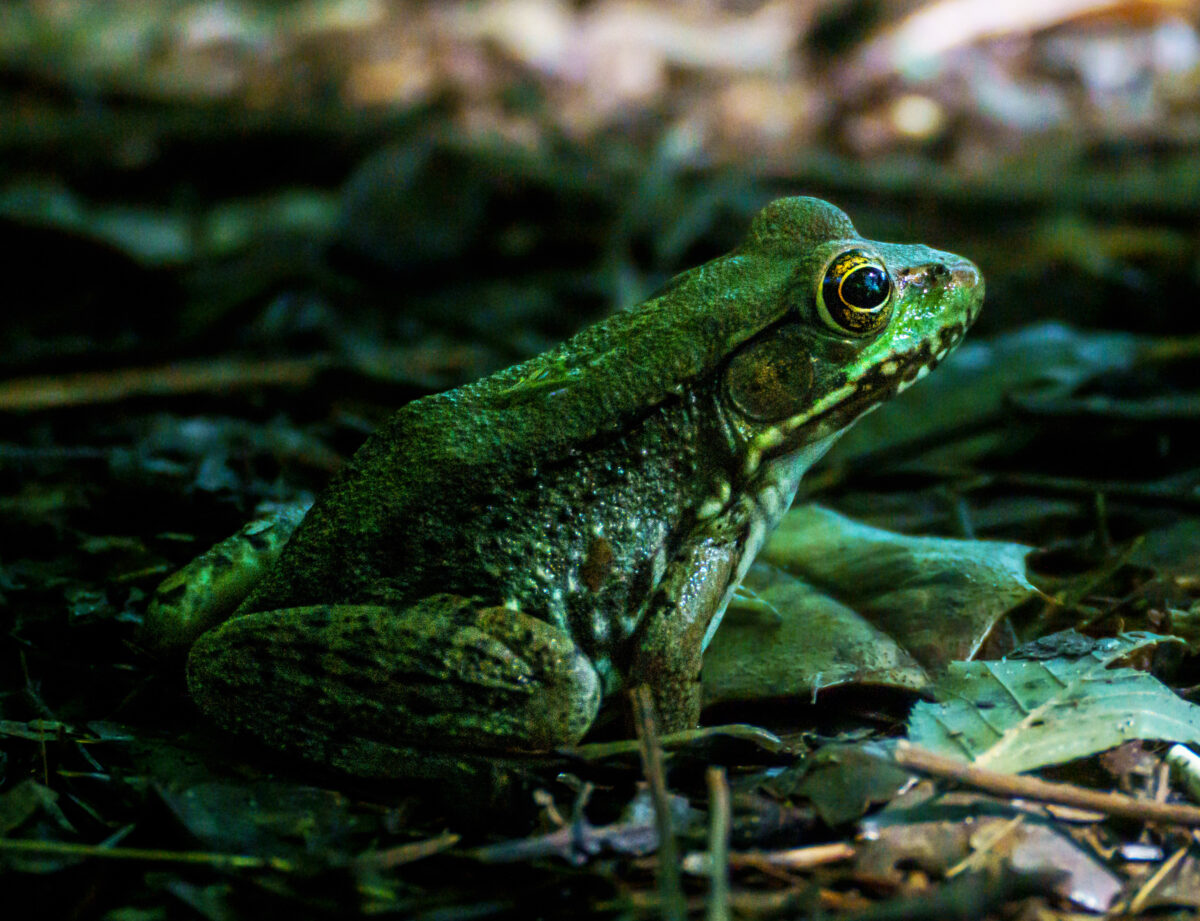
A green frog posing for the camera.
As I write this blog, my mind returns to a Latin phrase etched into a ring on display in Historic Jamestowne: “Memento Mori,” which translates to, “remember thy death.” What struck me about this phrase was my interpretation of it. I travel to hike and photograph wildlife because it brings me joy and I hope to inspire others to seek out that same joy. One of my daily reminders is to “remember thy death” so that I may spend as much time as possible to soak up as many outdoor moments as my time allows.
Explore the Wild with Meg Raynes
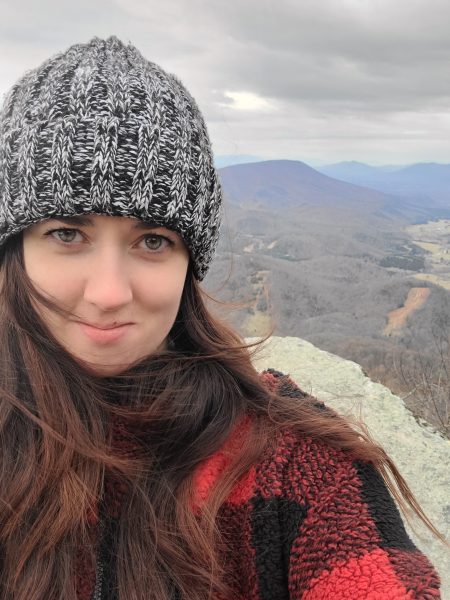
Meg Raynes is a hiker, traveler, photographer, and teacher.
If you would like to follow along as she explores the Virginia Bird and Wildlife Trail, then make sure to subscribe to DWR’s Notes From the Field newsletter.
You can see more of Meg’s plant and animal observations during her adventures by following her on iNaturalist.
Follow Meg on Instagram @meg.does.a.hike to see all of her wonderful photography.


